50 Questions And Answers-Anatomy and Physiology: Exploring the Human Body’s Structure and Functions
Anatomy plays a fundamental role in the education and training of nursing students. It is the study of the structure and organization of the human body, providing a solid foundation for understanding how the body functions and how it relates to nursing practice. Here are the answers to various questions related to anatomy and its importance in nursing:

1. What is the study of anatomy, and why is it important for nursing students?
The study of anatomy involves the exploration of the body’s structure, including organs, tissues, and systems. It is crucial for nursing students as it provides a comprehensive understanding of human anatomy, enabling them to accurately assess and provide care to patients. Knowledge of anatomy helps nurses identify anatomical landmarks, interpret diagnostic tests, administer medications safely, and understand the relationship between body structures and health conditions.
2. What are the levels of structural organization in the human body?
The human body exhibits a hierarchical organization consisting of the following levels: chemical level, cellular level, tissue level, organ level, organ system level, and organismal level. Each level builds upon the previous one, contributing to the overall structure and function of the body.
3. Describe the anatomical positions and directional terms used in human anatomy.
Anatomical positions provide a standard reference point for describing the body’s orientation. The anatomical position involves standing upright, facing forward, with arms at the sides and palms facing forward. Directional terms, such as superior, inferior, anterior, posterior, medial, lateral, proximal, and distal, are used to describe the location of body structures in relation to one another.
4. What are the major body cavities and their respective organs?
The major body cavities include the dorsal cavity (containing the cranial cavity and spinal cavity) and the ventral cavity (comprising the thoracic cavity and abdominopelvic cavity). The organs within these cavities include the brain, spinal cord, heart, lungs, liver, stomach, intestines, and reproductive organs.
5. Explain the difference between gross anatomy and microscopic anatomy.
Gross anatomy, also known as macroscopic anatomy, involves the study of body structures visible to the naked eye. It includes the examination of organs, tissues, and organ systems through dissection and observation. Microscopic anatomy, on the other hand, focuses on the study of tissues and cells using microscopes. It involves exploring the details of cells, their organization into tissues, and their functions within the body.
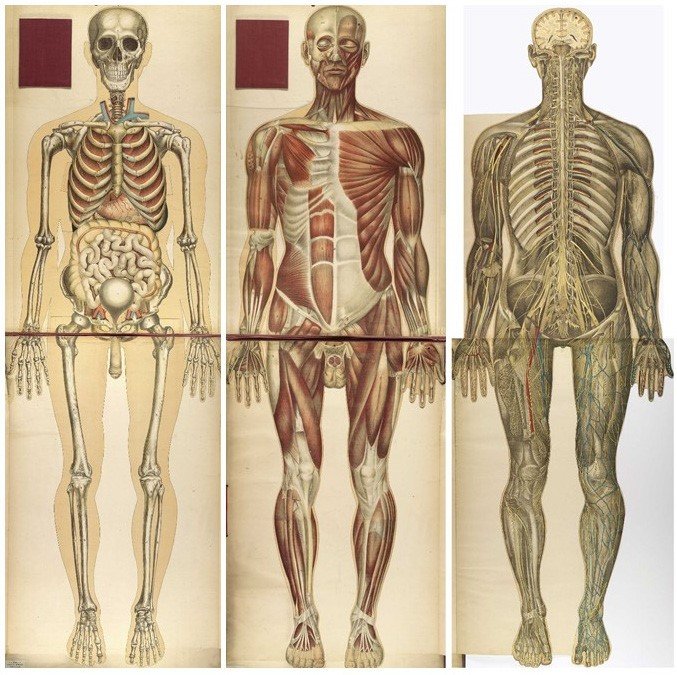
6. What are the main functions of the skeletal system in the human body?
The skeletal system performs several vital functions. It provides structural support and shape to the body, protects delicate organs, allows for movement through its interaction with muscles, produces blood cells in the bone marrow, stores minerals such as calcium and phosphorus, and serves as a reservoir for energy storage in the form of adipose tissue.
7. Name and describe the different types of bones found in the human body.
The human body has five types of bones: long bones, short bones, flat bones, irregular bones, and sesamoid bones. Long bones, such as the femur and humerus, are longer than they are wide and contribute to body movement. Short bones, such as the wrist and ankle bones, are cube-shaped and provide stability and support. Flat bones, such as the skull and ribs, are thin, flat, and offer protection to internal organs. Irregular bones, such as the vertebrae and facial bones, have complex shapes and functions. Sesamoid bones, like the patella (kneecap), are small bones embedded within tendons.
8. What are the major joints in the human body, and what type of movements do they allow?
The human body has several types of joints, including hinge joints (allowing flexion and extension, like the elbow), ball-and-socket joints (allowing a wide range of movements, like the hip and shoulder), pivot joints (allowing rotation, like the joint between the atlas and axis vertebrae in the neck), saddle joints (allowing movements in two planes, like the joint between the thumb and wrist), and gliding joints (allowing sliding movements, like the joints between the wrist bones).

9. Describe the structure and functions of muscles in the human body.
Muscles are the contractile tissues responsible for body movement and maintaining posture. They are composed of muscle fibers that can shorten and generate force. Muscles are categorized into three types: skeletal muscles (attached to bones, controlled voluntarily, and responsible for body movements), cardiac muscles (found in the heart and responsible for its contractions), and smooth muscles (found in organs and blood vessels, controlling involuntary movements).
10. What are the three types of muscle tissue, and where are they found?
The three types of muscle tissue include skeletal muscle, cardiac muscle, and smooth muscle. Skeletal muscles are attached to bones and allow for voluntary movements. Cardiac muscle is found exclusively in the heart and is responsible for involuntary contractions to pump blood. Smooth muscle is located in the walls of organs, blood vessels, and other structures, controlling involuntary movements such as peristalsis.
These answers provide a brief overview of the anatomy-related questions. However, due to space constraints, it is not possible to cover all the details and intricacies of each topic. To further explore these topics and gain a comprehensive understanding, it is recommended to refer to reliable anatomy textbooks, online educational resources, and academic articles that delve deeper into each subject.
References:
1. Tortora, G. J., & Derrickson, B. (2017). Principles of anatomy and physiology (15th ed.). John Wiley & Sons.
2. Moore, K. L., Dalley, A. F., & Agur, A. M. R. (2018). Clinically oriented anatomy (8th ed.). Wolters Kluwer.
3. Ross, M. H., Pawlina, W., & Barnash, K. L. (2011). Histology: A Text and Atlas (6th ed.). Lippincott Williams & Wilkins.
Please note that the references provided are for general anatomy textbooks, and specific references for each subtopic may vary.

11. Explain the structure and functions of the cardiovascular system.
The cardiovascular system, also known as the circulatory system, consists of the heart, blood vessels, and blood. The heart acts as a muscular pump that propels oxygenated blood to the body’s tissues and returns deoxygenated blood to the lungs for oxygenation. The blood vessels, including arteries, veins, and capillaries, form a network that transports blood throughout the body. The cardiovascular system functions to deliver oxygen, nutrients, hormones, and immune cells to the tissues, remove waste products, regulate body temperature, and maintain fluid balance.
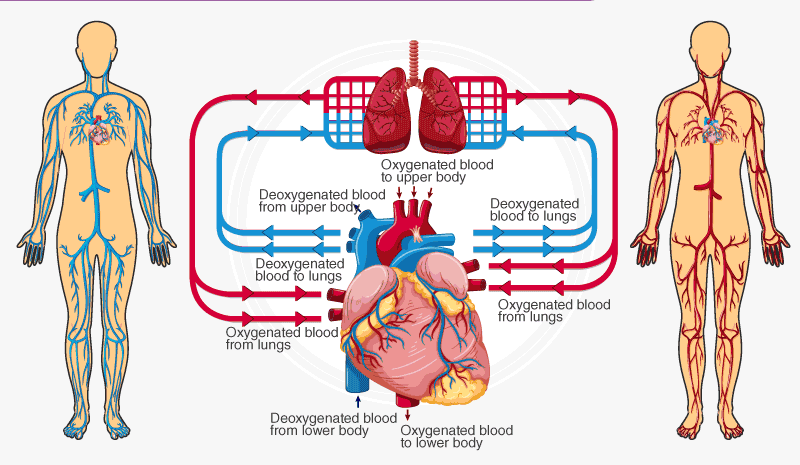
12. What are the major components of blood and their respective functions?
Blood is composed of various components, including red blood cells (erythrocytes), white blood cells (leukocytes), platelets (thrombocytes), and plasma. Red blood cells contain hemoglobin and transport oxygen to body tissues. White blood cells play a crucial role in the immune response, defending the body against infections and diseases. Platelets are responsible for blood clotting to prevent excessive bleeding. Plasma is the liquid component of blood that carries nutrients, hormones, and waste products and helps regulate body temperature.

13. Describe the structure and functions of the respiratory system.
The respiratory system is responsible for the exchange of oxygen and carbon dioxide between the body and the external environment. It consists of the nose, nasal cavity, pharynx, larynx, trachea, bronchi, and lungs. The respiratory system functions by inhaling oxygen-rich air, which passes through the respiratory tract and reaches the alveoli in the lungs. In the alveoli, oxygen diffuses into the bloodstream, while carbon dioxide, a waste product, diffuses out of the bloodstream and is exhaled.
14. What are the primary organs of the digestive system, and what are their functions?
The primary organs of the digestive system include the mouth, esophagus, stomach, small intestine, large intestine, liver, gallbladder, and pancreas. The mouth is responsible for mechanical digestion through chewing, and the salivary glands secrete enzymes to initiate chemical digestion. The esophagus transports food from the mouth to the stomach. The stomach secretes digestive enzymes and acids to break down food further. The small intestine is where most digestion and absorption of nutrients occur. The large intestine absorbs water and electrolytes and forms feces for elimination. The liver produces bile, the gallbladder stores and releases bile, and the pancreas secretes digestive enzymes and hormones.
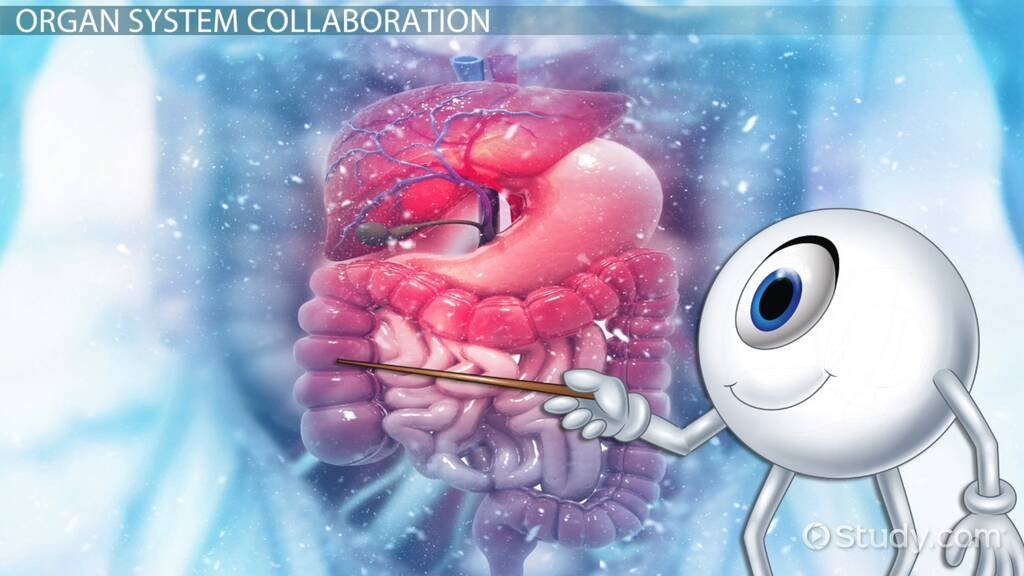
15. Explain the role of the liver and pancreas in the digestive system.
The liver is a vital organ that performs numerous functions in the body, including its role in digestion. It produces bile, which is stored in the gallbladder and released into the small intestine to aid in the digestion and absorption of fats. The liver also metabolizes nutrients, detoxifies harmful substances, stores vitamins and minerals, and synthesizes plasma proteins.
The pancreas is both an exocrine and endocrine gland. As an exocrine gland, it produces pancreatic enzymes that are released into the small intestine to aid in the digestion of carbohydrates, proteins, and fats. As an endocrine gland, it secretes hormones such as insulin and glucagon, which regulate blood sugar levels.
16. Describe the structure and functions of the urinary system.
The urinary system, also known as the renal system, comprises the kidneys, ureters, urinary bladder, and urethra. The kidneys filter waste products, excess water, and electrolytes from the blood to form urine. Urine is then transported through the ureters to the urinary bladder, where it is stored until elimination through the urethra. The urinary system helps maintain fluid and electrolyte balance, regulate blood pressure, produce erythropoietin (a hormone that stimulates red blood cell production), and eliminate metabolic waste products.

17. What is the role of the kidneys in maintaining homeostasis?
The kidneys play a vital role in maintaining homeostasis within the body. They regulate the balance of water, electrolytes (such as sodium, potassium, and calcium), and acid-base levels in the blood. The kidneys filter waste products and toxins, control blood pressure through the renin-angiotensin-aldosterone system, and produce erythropoietin to stimulate red blood cell production. Additionally, the kidneys activate vitamin D, which is important for calcium absorption and bone health.
18. Explain the structure and functions of the nervous system.
The nervous system is a complex network of specialized cells called neurons that transmit electrical impulses throughout the body. It consists of the central nervous system (CNS), which includes the brain and spinal cord, and the peripheral nervous system (PNS), which includes the nerves that connect the CNS to the rest of the body. The nervous system coordinates and controls body functions, processes sensory information, initiates and regulates voluntary and involuntary movements, and enables thinking, memory, and emotions.
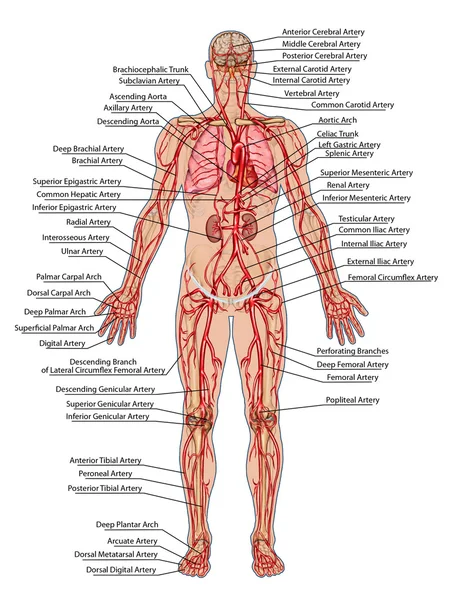
19. What are the different types of neurons and their functions?
Neurons are the basic functional units of the nervous system. There are three types of neurons: sensory neurons, motor neurons, and interneurons. Sensory neurons transmit sensory information from the body’s sensory receptors (such as in the skin, eyes, and ears) to the CNS. Motor neurons carry signals from the CNS to muscles and glands, enabling voluntary and involuntary movements. Interneurons connect sensory and motor neurons within the CNS and are involved in processing and integrating information.
20. Describe the structure and functions of the endocrine system.
The endocrine system is a network of glands that produce and secrete hormones, chemical messengers that regulate various bodily functions. Major endocrine glands include the pituitary gland, thyroid gland, parathyroid glands, adrenal glands, pancreas, ovaries (in females), and testes (in males). Hormones released by these glands regulate growth and development, metabolism, reproduction, stress response, electrolyte balance, and many other physiological processes.
21. What are the major endocrine glands and their associated hormones?
The major endocrine glands include the pituitary gland (producing hormones such as growth hormone and prolactin), thyroid gland (producing thyroid hormones), parathyroid glands (producing parathyroid hormone), adrenal glands (producing hormones like cortisol and adrenaline), pancreas (producing insulin and glucagon), ovaries (producing estrogen and progesterone in females), and testes (producing testosterone in males). Each gland produces specific hormones that regulate various aspects of bodily functions.
22. Explain the structure and functions of the reproductive system in males and females.
The male reproductive system consists of the testes, epididymis, vas deferens, prostate gland, seminal vesicles, and penis. It is responsible for the production and delivery of sperm for fertilization.
The female reproductive system includes the ovaries, fallopian tubes, uterus, cervix, and vagina. It is responsible for the production of eggs, the fertilization and implantation of the embryo, and the nurturing and development of the fetus during pregnancy.
23. What is the process of fertilization and embryonic development?
Fertilization occurs when a sperm cell penetrates and fertilizes an egg, resulting in the formation of a zygote. The zygote undergoes rapid cell division and travels through the fallopian tubes to reach the uterus, where it implants into the uterine lining. The developing embryo then undergoes further cell division and differentiation, forming different tissues and organs. This process continues until birth, with the embryo developing into a fetus.
24. Describe the structure and functions of the integumentary system.
The integumentary system is composed of the skin, hair, nails, and associated glands. The skin is the largest organ of the body and has multiple functions. It acts as a protective barrier against external threats, regulates body temperature, synthesizes vitamin D, detects sensory stimuli, and plays a role in the immune response. Hair and nails provide additional protection, while glands, such as sweat glands and sebaceous glands, secrete substances that moisturize the skin or aid in temperature regulation.
25. What are the main layers of the skin, and what are their functions?
The skin has three main layers: the epidermis, dermis, and hypodermis (subcutaneous layer). The epidermis is the outermost layer and provides waterproofing and protection against pathogens. The dermis is the middle layer and contains blood vessels, nerves, hair follicles, and sweat glands. It provides structural support and houses sensory receptors. The hypodermis is the innermost layer and consists of fat cells that insulate and cushion the body.
26. Explain the structure and functions of the lymphatic system.
The lymphatic system is a network of vessels, lymph nodes, and lymphoid organs, including the spleen and thymus. It functions to transport lymph, a clear fluid containing white blood cells, throughout the body. The lymphatic system plays a crucial role in the immune response, filtering and trapping pathogens and foreign substances in lymph nodes, producing immune cells, and facilitating the return of excess tissue fluid to the bloodstream.
27. What is the role of lymph nodes and lymphatic vessels in the immune response?
Lymph nodes are small, bean-shaped structures found along the lymphatic vessels. They act as filters, trapping and destroying pathogens, foreign substances, and abnormal cells present in the lymph. Lymphatic vessels carry lymph and immune cells to the lymph nodes, where the immune response is initiated. The lymph nodes contain specialized immune cells that help identify and eliminate harmful substances, contributing to the body’s defense against infections and diseases.
28. Describe the structure and functions of the sensory organs (eyes, ears, nose, tongue, and skin).
The sensory organs allow us to perceive and interpret different sensory stimuli from the environment. The eyes contain specialized cells called photoreceptors that detect light and enable vision. The ears consist of structures that capture sound waves and transmit them as electrical signals to the brain for hearing. The nose contains olfactory receptors responsible for the sense of smell. The tongue contains taste buds that detect different tastes (sweet, sour, salty, bitter, umami). The skin contains sensory receptors that detect touch, pressure, temperature, and pain.
29. What is the anatomical structure of the spinal cord and its role in transmitting signals?
The spinal cord is a long, cylindrical structure that extends from the brain down the vertebral column. It is composed of neural tissue and serves as a major pathway for transmitting signals between the brain and the rest of the body. The spinal cord receives sensory information from the peripheral nerves and relays motor commands from the brain to muscles and glands. It also coordinates reflex actions, enabling rapid responses to stimuli without involving the brain.
30. Explain the structure and functions of the cranial nerves.
The cranial nerves are a set of twelve pairs of nerves that originate from the brain and primarily innervate the head and neck region. Each cranial nerve has a specific function, such as transmitting sensory information (e.g., vision, hearing, taste) or controlling motor movements (e.g., facial expressions, eye movements, swallowing). The cranial nerves play a crucial role in sensory perception, motor coordination, and the functioning of various sensory organs and facial muscles.
31. Describe the structure and functions of the musculoskeletal system.
The musculoskeletal system consists of the bones, muscles, joints, and connective tissues in the body. The skeletal system provides structural support, protection for internal organs, and serves as a framework for muscle attachment. Bones are rigid structures that come together at joints, allowing for movement. Muscles are responsible for generating force and facilitating movement. They work in pairs, with one muscle contracting while the other relaxes to create movement.
32. What are the different types of joints and their respective movements?
There are three main types of joints: fibrous joints, cartilaginous joints, and synovial joints. Fibrous joints are immovable and provide stability, such as the sutures between the bones of the skull. Cartilaginous joints allow limited movement and are found in the spine and between the ribs and sternum. Synovial joints are freely movable and include hinge joints (e.g., elbow), ball-and-socket joints (e.g., shoulder, hip), pivot joints (e.g., neck), and others. These joints allow a wide range of movements, including flexion, extension, rotation, abduction, adduction, and more.
33. Explain the process of muscle contraction and relaxation.
Muscle contraction occurs when muscle fibers receive signals from motor neurons. The interaction between actin and myosin filaments within muscle fibers leads to the sliding of these filaments, causing the muscle to shorten and generate force. This process is regulated by the release of calcium ions and the energy molecule ATP. When the signals cease, the muscle fibers relax, and the actin and myosin filaments slide back to their original position, lengthening the muscle.
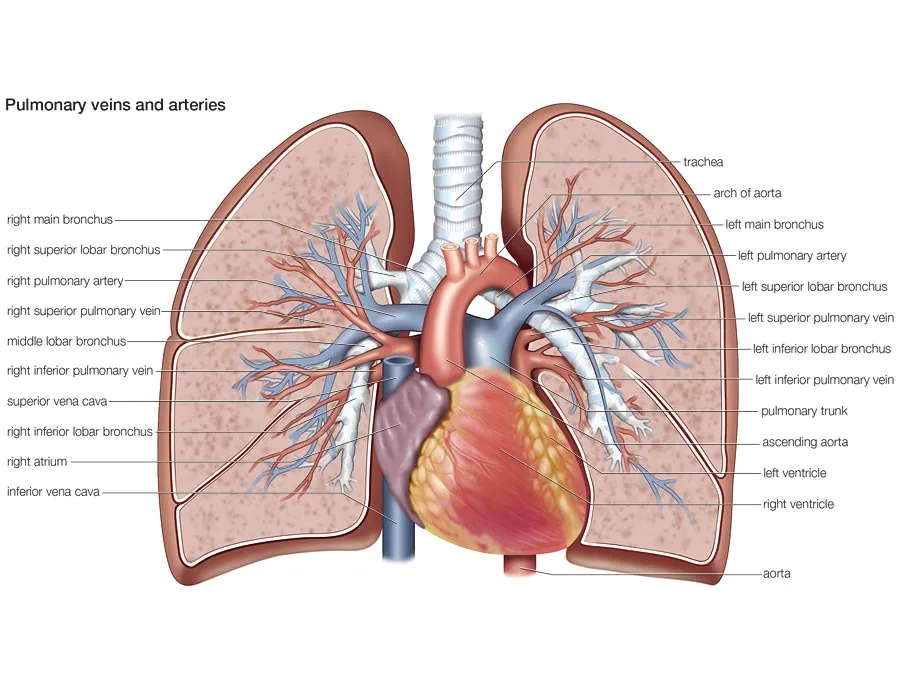
34. Describe the structure and functions of the heart and major blood vessels.
The heart is a muscular organ located in the chest and acts as a pump to circulate blood throughout the body. It consists of four chambers: two atria and two ventricles. The atria receive blood from the veins, while the ventricles pump blood out of the heart. Major blood vessels, such as the aorta, arteries, veins, and capillaries, form a network that transports oxygen, nutrients, hormones, and waste products throughout the body. Arteries carry oxygenated blood away from the heart, veins return deoxygenated blood to the heart, and capillaries facilitate the exchange of substances between the blood and tissues.
35. What are the different types of blood cells and their functions?
Blood consists of red blood cells (erythrocytes), white blood cells (leukocytes), and platelets (thrombocytes). Red blood cells carry oxygen from the lungs to the tissues and remove carbon dioxide. White blood cells are involved in the immune response, defending the body against pathogens and foreign substances. They include different types, such as neutrophils, lymphocytes, monocytes, eosinophils, and basophils. Platelets play a crucial role in blood clotting, helping to prevent excessive bleeding when a blood vessel is injured.
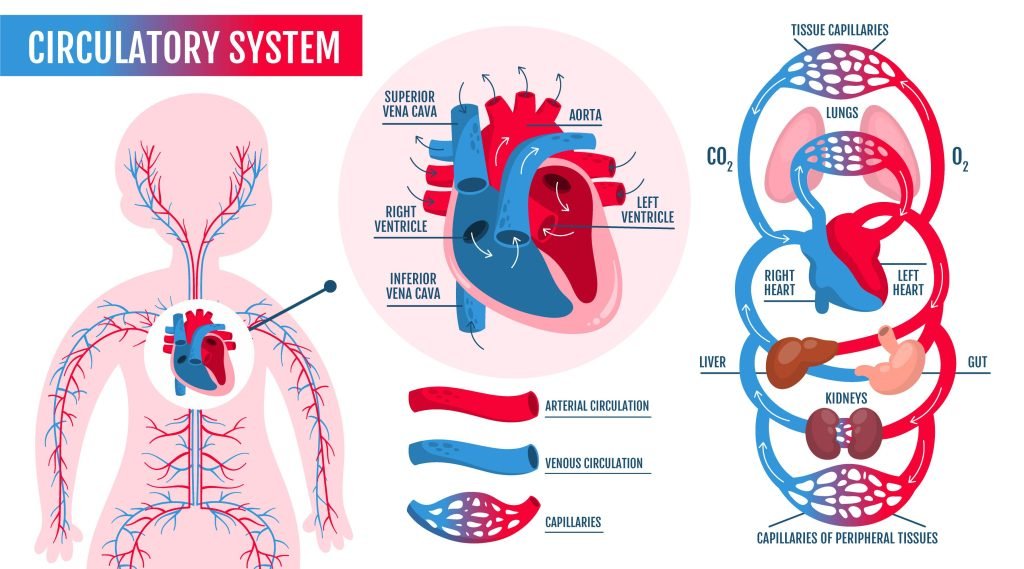
36. Explain the structure and functions of the lungs and respiratory passages.
The lungs are the primary organs of the respiratory system, responsible for gas exchange. Each lung is composed of bronchi, bronchioles, and alveoli. The bronchi branch into smaller bronchioles, which lead to the alveoli, where gas exchange occurs. Oxygen from the inhaled air diffuses into the bloodstream, while carbon dioxide, a waste product, is removed from the blood and exhaled. The respiratory passages warm, moisten, and filter the incoming air, ensuring optimal conditions for gas exchange to occur.
37. Describe the structure and functions of the gastrointestinal tract and associated organs.
The gastrointestinal (GI) tract, also known as the digestive system, is responsible for the digestion and absorption of nutrients from food. It consists of several organs, including the mouth, esophagus, stomach, small intestine, large intestine, rectum, and anus. The mouth begins the process of digestion through chewing and the production of saliva. The stomach secretes gastric juices to break down food, and the small intestine further digests and absorbs nutrients. The large intestine absorbs water and electrolytes and forms feces for elimination. The liver, gallbladder, and pancreas are accessory organs that contribute to digestion and nutrient processing.
38. What are the major hormones produced by the endocrine glands, and what are their functions?
The endocrine glands secrete hormones into the bloodstream, regulating various body functions. Some major hormones and their functions include:
– Insulin: Regulates blood sugar levels by facilitating the uptake of glucose by cells.
– Thyroid hormones: Regulate metabolism, growth, and development.
– Adrenaline (epinephrine) and cortisol: Regulate stress response and metabolism.
– Estrogen and progesterone: Regulate the menstrual cycle and female reproductive system.
– Testosterone: Regulates male reproductive system and secondary sexual characteristics.
– Growth hormone: Stimulates growth and development in children.
– Parathyroid hormone: Regulates calcium levels in the blood.
These are just a few examples, as there are many other hormones produced by different endocrine glands, each with its specific functions.
39. Explain the structure and functions of the male and female reproductive systems.
The male reproductive system consists of the testes, epididymis, vas deferens, seminal vesicles, prostate gland, urethra, and penis. Its primary function is to produce and deliver sperm for fertilization. The female reproductive system includes the ovaries, fallopian tubes, uterus, cervix, and vagina. Its main functions are the production of eggs, fertilization, implantation of the fertilized egg, and support for fetal development during pregnancy.
40. Describe the layers of the skin and their roles in protection and regulation.
The skin has three primary layers: the epidermis, dermis, and hypodermis. The epidermis is the outermost layer and provides a protective barrier against pathogens, UV radiation, and dehydration. It also plays a role in temperature regulation. The dermis is the middle layer and contains blood vessels, nerves, sweat glands, and hair follicles. It provides structural support, nourishment, and temperature regulation. The hypodermis, also known as the subcutaneous layer, consists of fat cells that help insulate the body and serve as an energy reserve.
41. What are the main components of the lymphatic system and their functions?
The lymphatic system includes lymphatic vessels, lymph nodes, the spleen, thymus gland, and tonsils. Its primary functions are maintaining fluid balance, filtering pathogens and foreign substances from the lymph, and supporting the immune system. Lymphatic vessels collect excess fluid from tissues and return it to the bloodstream. Lymph nodes filter the lymph and contain immune cells that help fight infections. The spleen filters blood, removes old red blood cells, and produces immune cells. The thymus gland plays a role in immune system development, particularly in early life. Tonsils help trap and remove pathogens entering through the mouth and throat.
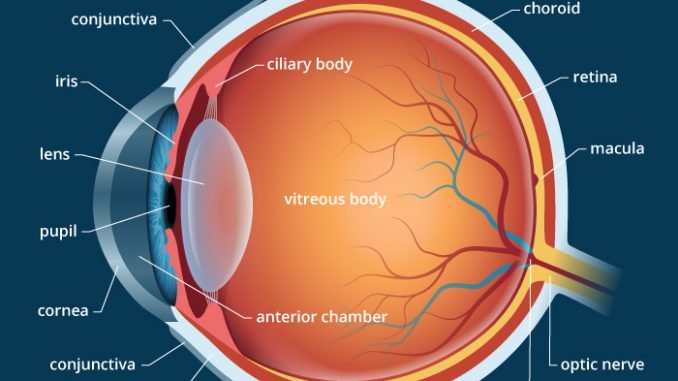
42. Explain the structure and functions of the eyes and their role in vision.
The eyes are complex sensory organs responsible for vision. They consist of various structures, including the cornea, iris, pupil, lens, retina, and optic nerve. Light enters the eye through the cornea and passes through the pupil, which adjusts its size based on lighting conditions. The lens focuses the light onto the retina, which contains specialized cells called photoreceptors. Photoreceptors convert light signals into electrical signals, which are transmitted through the optic nerve to the brain for processing and interpretation, resulting in vision.

43. Describe the structure and functions of the ears and their role in hearing and balance.
The ears are sensory organs responsible for hearing and balance. The ear consists of three main parts: the outer ear, middle ear, and inner ear. The outer ear collects sound waves and directs them to the middle ear. The middle ear contains the eardrum and three small bones called ossicles (malleus, incus, and stapes), which amplify and transmit sound vibrations. The inner ear contains the cochlea, which converts sound vibrations into electrical signals that are transmitted to the brain for processing. The inner ear also contains the vestibular system, which helps maintain balance and equilibrium.
44. What are the different taste receptors located on the tongue, and what are their functions?
The tongue contains taste buds that allow us to perceive different tastes. There are five primary taste receptors:
– Sweet: Detects sugars and provides a pleasurable sensation.
– Sour: Detects acidity and can indicate spoiled or acidic foods.
– Salty: Detects sodium and helps maintain electrolyte balance.
– Bitter: Detects toxins and can signal potential harm.
– Umami: Detects savory and meaty flavors.
These taste receptors work together to help us perceive the diverse flavors in the food we consume.
45. Explain the structure and functions of the central nervous system.
The central nervous system (CNS) consists of the brain and spinal cord. The brain is the control center of the body, responsible for processing sensory information, controlling movement, regulating bodily functions, and higher cognitive functions. The spinal cord is a long, cylindrical bundle of nerves that extends from the brain down the back. It relays signals between the brain and the rest of the body and coordinates reflex actions.
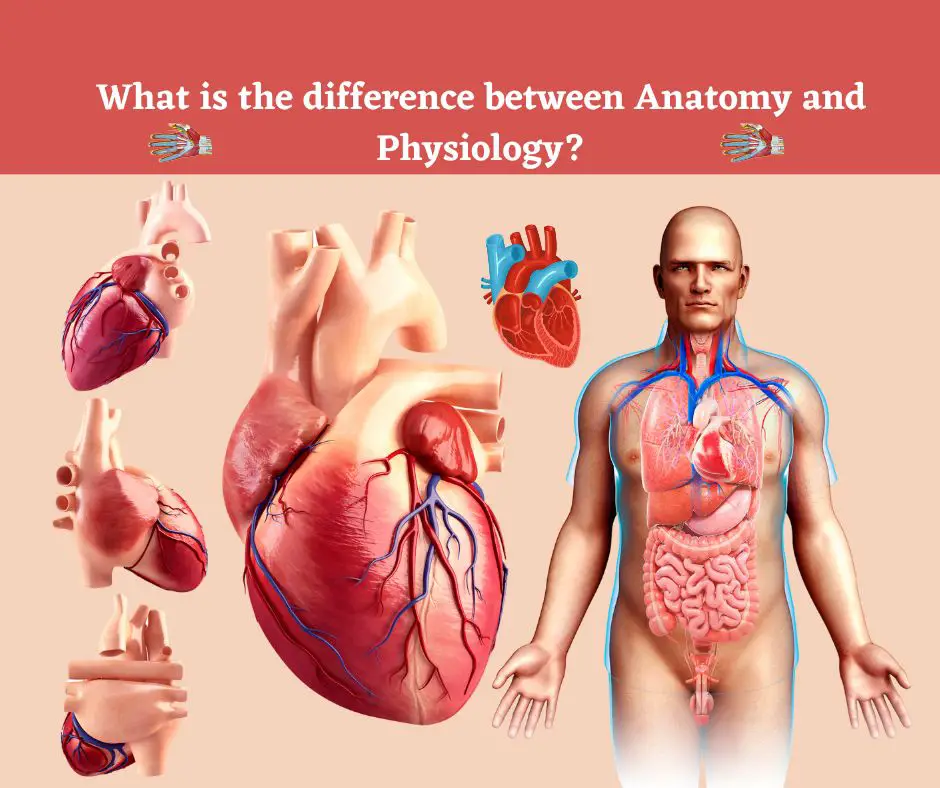
46. Describe the structure and functions of the peripheral nervous system.
The peripheral nervous system (PNS) includes all nerves and ganglia outside of the brain and spinal cord. It consists of two main components: the somatic nervous system and the autonomic nervous system. The somatic nervous system controls voluntary movements and sensory perception. The autonomic nervous system regulates involuntary functions, such as heartbeat, digestion, and respiration. It further divides into the sympathetic and parasympathetic divisions, which have opposing effects on various organs and bodily functions.
47. What are the major endocrine glands, and what hormones do they secrete?
The major endocrine glands include the pituitary gland, thyroid gland, parathyroid glands, adrenal glands, pancreas, ovaries (in females), and testes (in males). Each gland secretes specific hormones:
– Pituitary gland: Secretes growth hormone, thyroid-stimulating hormone, follicle-stimulating hormone, luteinizing hormone, prolactin, and more.
– Thyroid gland: Secretes thyroid hormones (thyroxine and triiodothyronine) and calcitonin.
– Parathyroid glands: Secrete parathyroid hormone.
– Adrenal glands: Secrete cortisol, adrenaline (epinephrine), noradrenaline (norepinephrine), and aldosterone.
– Pancreas: Secretes insulin and glucagon.
– Ovaries: Secrete estrogen and progesterone.
– Testes: Secrete testosterone.
These hormones play crucial roles in regulating various body functions and maintaining homeostasis.
48. Explain the process of ovulation and the menstrual cycle in females.
Ovulation is the release of a mature egg from the ovaries, which typically occurs around the midpoint of the menstrual cycle. The menstrual cycle is divided into several phases:
– Menstrual phase: The shedding of the uterine lining, resulting in menstrual bleeding.
– Follicular phase: Follicles in the ovary mature, and one dominant follicle develops and releases an egg.
– Ovulation: The mature egg is released from the ovary into the fallopian tube.
– Luteal phase: The ruptured follicle transforms into the corpus luteum, which produces progesterone to prepare the uterus for potential pregnancy.
– If fertilization and implantation of the egg do not occur, the corpus luteum breaks down, hormone levels decrease, and the menstrual cycle begins again.
49. Describe the structure and functions of the epidermis and dermis of the skin.
The skin consists of two primary layers: the epidermis and dermis. The epidermis is the outermost layer and serves as a protective barrier. It is composed of several layers of cells, including the outermost layer of dead skin cells called the stratum corneum. The epidermis also contains melanocytes, which produce the pigment melanin that gives color to the skin and protects against UV radiation.
The dermis is the underlying layer beneath the epidermis and provides structural support and nourishment to the skin. It contains blood vessels, hair follicles, sweat glands, sebaceous glands, nerve endings, and collagen and elastin fibers, which give the skin its elasticity and strength.
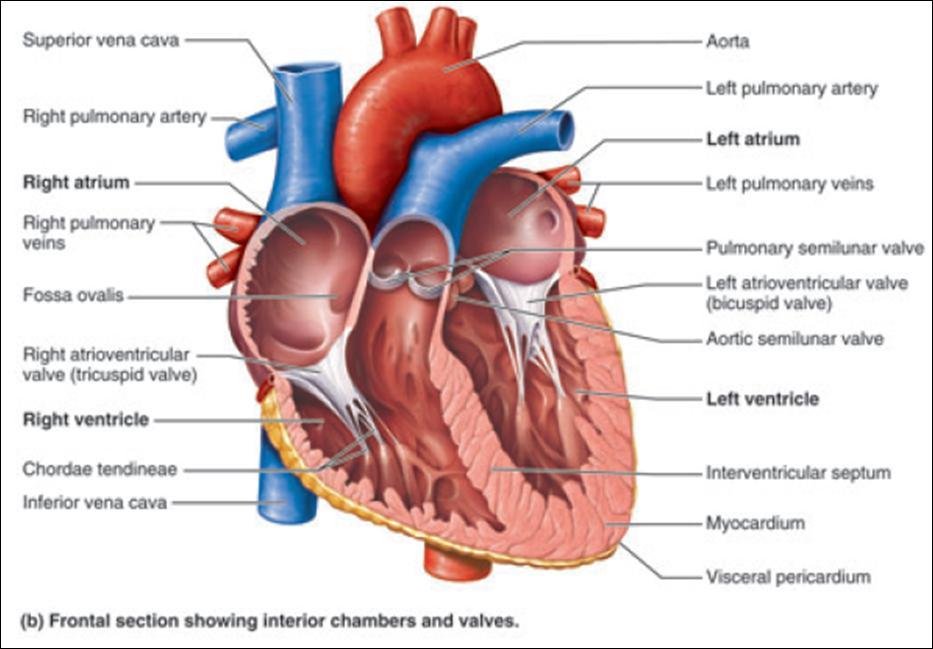
50. What are the main lymphoid organs, and what are their roles in the body?
The main lymphoid organs include the lymph nodes, spleen, thymus gland, and tonsils. These organs play crucial roles in the immune system:
– Lymph nodes: Filter lymph fluid, removing pathogens and foreign substances, and contain immune cells that help fight infections.
– Spleen: Filters blood, removes old red blood cells, and produces immune cells. It also stores platelets and serves as a reservoir for blood.
– Thymus gland: Plays a role in immune system development, particularly in early life, by producing and maturing T cells, a type of white blood cell involved in immune responses.
– Tonsils: Help trap and remove pathogens entering through the mouth and throat, contributing to immune defense.
In conclusion,
Understanding anatomy and physiology is fundamental for nursing students and healthcare professionals alike. It provides a comprehensive knowledge of the human body’s structure and functions, enabling them to deliver effective care and make informed clinical decisions. From the various body systems to the intricate workings of organs, tissues, and cells, the study of anatomy and physiology forms the basis for comprehending the complexities of human health and disease.
By grasping the intricate details of anatomical structures and physiological processes, nurses can assess, diagnose, and treat patients with confidence. They can effectively collaborate with other healthcare professionals, communicate with patients and their families, and advocate for the best possible outcomes. Additionally, this knowledge equips nurses with the skills to promote health, prevent illness, and educate patients about their conditions and self-care.
While this article has covered a wide range of topics in anatomy and physiology, it is important to remember that these subjects are vast and continuously evolving. It is crucial for nursing students and professionals to engage in lifelong learning, stay updated with current research and advancements, and continually enhance their understanding of the human body.
By combining a solid foundation in anatomy and physiology with clinical experience and critical thinking, nurses can provide holistic and patient-centered care. They play a vital role in the healthcare team, contributing to the well-being and recovery of their patients. Through their knowledge and expertise, nurses make a significant difference in improving health outcomes and enhancing the overall quality of care.
So, whether you’re a nursing student embarking on your educational journey or an experienced nurse seeking to deepen your understanding, embracing the fascinating world of anatomy and physiology is an essential step towards becoming a proficient and compassionate healthcare professional.
Abbreviations and Acronyms: The Language of Nursing Students in Medical Terminology
https://www.goodwin.edu/enews/what-are-the-fundamentals-of-nursing/





